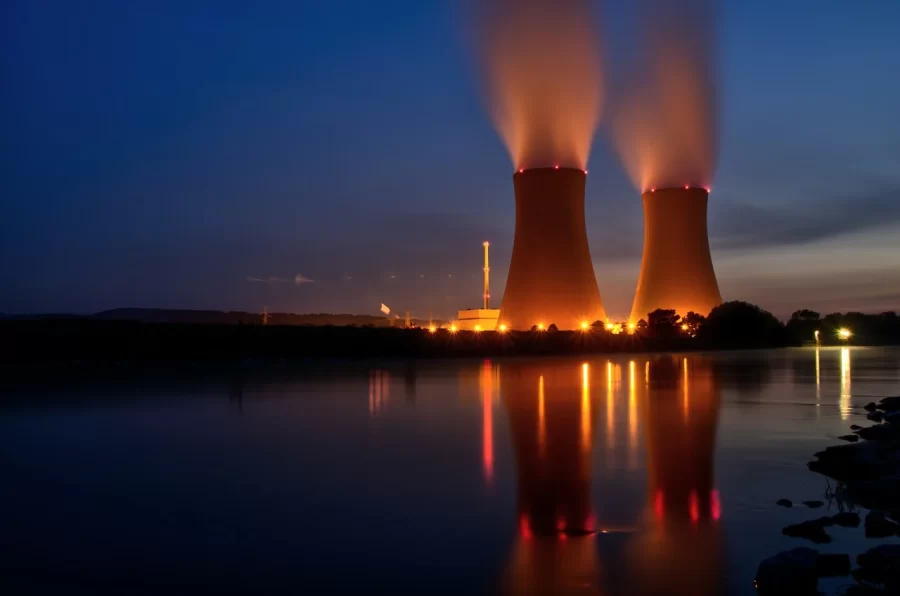Nuclear Power Supply
May 1, 2022
Chernobyl, 1986. An error in shutting down the nuclear reactor caused the reactor core to melt. The resulting leakage released lethal amounts of radiation into the atmosphere for nine days, killing an estimated four thousand people. The radiation was so dangerous that a 60km wide exclusion zone and over a hundred thousand people had to be evacuated. Chernobyl is still completely uninhabitable to this day.
The Chernobyl disaster of 1986 is what most people think of when they hear about nuclear meltdowns. After all, the meltdown was the most devastating one ever recorded. Meltdowns like these are one of the biggest reasons why over 10% of nuclear plants in the US have shut down since 2010. A great example of this is the Indian Point nuclear power plant just 25 miles north of New York City. After 59 years of providing over a quarter of New York City’s electricity, Indian Point fully shut down on April 30th, 2021.
There are several reasons why nuclear plants are shutting down. One reason is the looming danger of nuclear meltdown. Nuclear meltdowns occur when the reactor core melts or is damaged. This causes leakage of radioactive material resulting in the surrounding area becoming uninhabitable for hundreds of thousands of years.
Somewhat related to meltdowns, terrorism is another reason nuclear plants are closing. A terrorist attack on a nuclear power plant would be just as bad, if not worse, than a nuclear meltdown. “Twenty million people live within 50 miles of this plant. You can’t afford an accident here,” says John Lipscomb, an important member of the Riverkeeper environmental group. In fact, one of the planes that crashed into the twin towers during 9/11 flew right past the Indian Point nuclear power plant just 25 miles north of New York City, and the nuclear plant could’ve easily been a target of the attacks.
Spent nuclear fuel, commonly referred to as nuclear waste, is a massive problem with nuclear power. We have no way to store it for as long as it is hazardous. “It creates radioactive material that is toxic for tens of thousands of years and even hundreds of thousands of years. That’s a long time,” says Matt Cauchy, a physics teacher at Wilmington Friends School.
Another big reason why nuclear plants are shutting down is the cost of building and maintaining a nuclear power plant. Plummeting costs of renewable energy sources and increased regulations on nuclear power have made nuclear the most expensive energy source since 2014.
Though there are many downsides to nuclear plants, there are also many reasons to keep them. Firstly, nuclear power plants put out tons of power. Even with all that power generation, it produces no greenhouse gasses. On top of that, it takes up much less space than other green energy sources.
Building on that, nuclear power is firm power, unlike most other clean energy. Firm power is energy that generates power consistently. In contrast, solar and wind power are only on when it’s sunny or windy, respectively. Nuclear energy is the only option for clean, firm power other than geothermal energy.
Another huge reason why we shouldn’t shut down nuclear plants is the power production would have to be replaced by fossil fuels. “If you shut the nuclear plant down, today, most likely, you’re going to get a bunch of natural gas to replace it,” says David Roberts, a longtime energy reporter for vox. The problem is, these fossil fuels are much more dangerous than nuclear plants. “So if you’re choosing between nuclear and fossil fuels purely on a safety basis, there’s no comparison,” says David Roberts. Though we are getting rid of something potentially dangerous, the alternative is a much greater threat.
On top of that, we can’t just replace the lost energy production with renewables instead of fossil fuels. As David Roberts says, “Even if you replace that gigawatt of lost power with renewables, that’s a gigawatt of renewables that isn’t going to replace fossil fuel plants, right?” We simply don’t have enough renewables yet to be picky about which green energy source we use.
Though Indian Point already closed 11 months ago, 52 nuclear plants across the USA are still producing 20% of our country’s power. If these plants were to shut down, fossil fuels in the USA would grow by 25%. We would also lose half of our green energy production, but the risks of nuclear plants would be gone. But if we kept nuclear power, it could stay an extremely useful power source despite all the risks. Just like every other energy source, there are many downsides to nuclear. There is no perfect solution to this problem, but we need to weigh all the options when we decide which way to go.wadsaww































